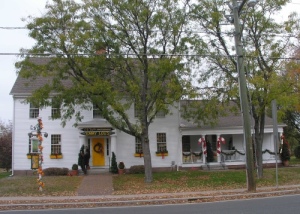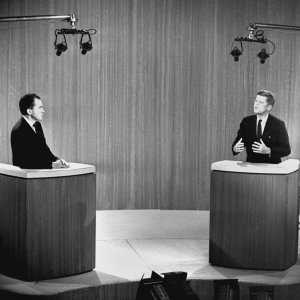Continuing last week’s theme, this article addresses the 1952 and 1956 Presidential elections, when Illinois Governor Adlai Stevenson II suffered resounding defeats at the hands of General Dwight Eisenhower, commander of the western allied forces in Europe in World War II.
In an earlier article on the 1960 Presidential election, I discussed the states of the largely “solid South” which, with several exceptions, cast their votes for the candidate from Massachusetts, John F. Kennedy. Stevenson largely enjoyed the same support in 1952, when he carried West Virginia, Kentucky, North Carolina, South Carolina, Georgia, Alabama, Mississippi, Arkansas, and Louisiana. In 1956, West Virginia, Kentucky, and Louisiana threw their support to Eisenhower, while Stevenson won a majority of Missouri’s voters. Eisenhower won over 80 percent of the electoral vote in both elections, 442-89 in 1952 and 457-73 in 1956. (One Alabama elector cast his 1956 vote for an Alabama politician, Walter B. Jones.)
In the absence of a scandal, Eisenhower, like U.S. Grant 88 years earlier, was a shoo-in whether he ran as a Republican or a Democrat. With great justification Stevenson reluctantly accepted his party’s nomination in 1952. Having been bitten by the bug, however, he successfully pursued the nomination again in 1956 and was swamped by John Kennedy in 1960. His ambition irritated the Kennedy team and cost him the position of Secretary of State in 1960. Instead, he was relegated to serve as United States Ambassador to the United Nations, where he served with great distinction until his death in 1965.
The Bushes and Clintons are not the first American political dynasties. They were preceded by the Kennedys and the Roosevelts (and, of course much earlier, the Adamses). Adlai Stevenson II also was part of a political dynasty. His namesake grandfather served as Vice President under Grover Cleveland. His maternal great-grandfather was one of the founders of the Republican Party, counting Abraham Lincoln among his friends. Adlai II’s father served as secretary of state in Illinois and his son, Adlai Stevenson III, served as a United States Senator.
Adlai Stevenson II is remembered best for his grace in defeat and his intellectual wit. Here are a few of my favorite quotes from him:
“It is said that a wise man who stands firm is a statesman, and a foolish man who stands firm is a catastrophe.” [Fools and Foolishness Quotes]
“An independent is a guy who wants to take the politics out of politics.” [Politics Quotes]
“Some people approach every problem with an open mouth.” [Quips and Comments Quotes]
For more about Adlai Stevenson II, please see the following sources:
- http://stevensoncenter.org/about/stevenson.shtml
- Greenberg, David, “Adlai Stevenson, The Last of the Beautiful Losers,” Slate Magazine, www.slate.com/articles/news








